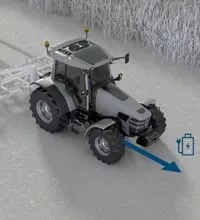How to get your mind back on track

Things are tough out there. Finding time to work on your mental resilience could make you a happier and more productive part of the team
What exactly is mental resilience? Well, whether you call it resilience, toughness or plain old grit, it’s all the same thing. It’s about being able to thrive when everyone else is just trying to survive.
Fundamentally, it’s about facing up to challenges, understanding what you can and can’t control, fighting through adversity, remaining present in the moment and learning not to obsess over all the possibilities of what might happen. Combined with a little self-belief, this should boost your confidence, courage and efficacy.
Tools for success
There are many different behaviours that you can adopt to encourage this state of mind. I teach them as MIND: measurable success; intrinsic motivation; now in the present; and dream big.
Measurable success is about making sure we have goals that we can focus on. Setting clear, well-defined goals allows you to take steps in the right direction, plan for challenges along the way and understand the likely emotional work involved.
Intrinsic motivation means finding a way to stay motivated without the constant need for external stimuli. Someone who is motivated by their own desires will always work harder than someone who needs to have a stick beating them to make them keep going. Where might you find that kind of motivation? Well, that’s a subjective issue. Everyone has their own driving forces, and it’s important that you find yours, consciously register them and establish a way to use them in the workplace.
Now in the present is about staying calm in high-pressure situations when it’s easy for us to be led astray by a part of our brains known as the amygdala. It’s the emotional centre of the brain, and it can be both the bane of our lives and a hero.
The amygdala’s job is to ensure our survival by scanning sensory information for threats and responding as necessary. So, if the boss wants a chat first thing on Monday, the butterflies, dry mouth and faster heartbeat all turn up. That’s the amygdala triggering a stress reaction.
Thankfully, the amygdala reaction can be managed. I find breathing techniques to be the most helpful approach, as they’re a natural and easy thing to do. Take big bellyfuls of air, exhale slowly and focus on your breathing process, as this will help to neutralise the amygdala’s stress reaction. By concentrating on the present in this way, you’ll be able to see more clearly and make more balanced decisions.
Finally, we need to dream big. Visualise a positive outcome and then work out exactly how you’ll achieve it. That means knowing the mental patterns associated with reaching that goal and convincing yourself that you’ve done something similar before. Done correctly, this will boost your confidence. After all, what the mind believes to be true, the body responds to. It’s another form of the placebo effect.
When I say visualise, I don’t mean some half-hearted vision of you lifting a trophy. Instead, I mean engaging all the senses and processes involved in getting there.
Putting MIND to work
Several years ago, I was at a meeting of the British Army’s Regimental Sergeant Majors. There, I heard a phrase which really nails this problem: “If you want to change the culture, you must first change the environment in which it operates”. The first step, then, is adjusting the working environment via your day-to-day processes and conversations. Over time, that becomes a cultural change.
For processes, I would suggest introducing workplace training on resilience, ideally aimed at different levels of the organisation. For instance, individuals should learn how to take ownership of their own resilience. Supervisors need to know how to facilitate that. Managers should be there to ensure it all happens, and CEOs need to see the value of having resilient and compassionate people working with and for them.
When it comes to conversational changes, it starts with a simple but genuine “How are you?” and ends with a handshake, eye contact and an understanding of the next steps in supporting an individual’s development.
A resilient working environment doesn’t appear overnight, and cultural change doesn’t just happen. But an understanding of what mental resilience is, the practices and behaviours that foster it, the introduction of training in it and conversations around it are all great ways to bring about that evolution.
James Elliott is a military mental resilience coach who has worked with the British Army on its OPSMART mental health programme
This is an edited extract from IMI's new MotorPro magazine, received free as part of IMI membership. Time to find out more about becoming a member of the most influential community in UK automotive…?




